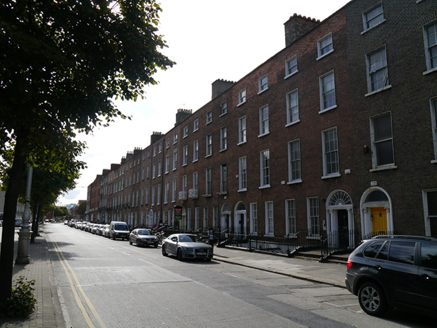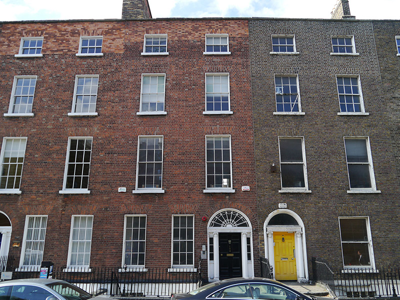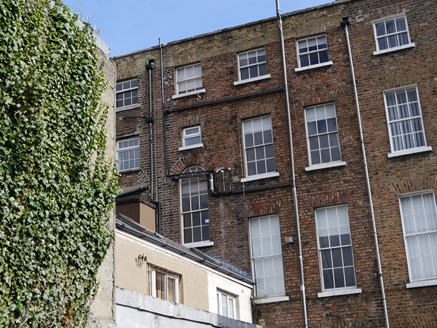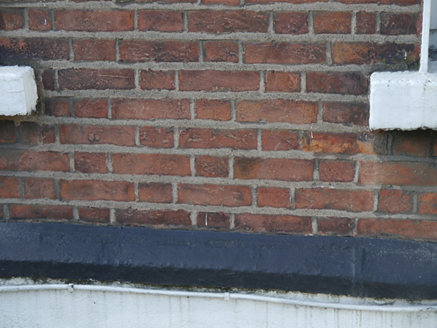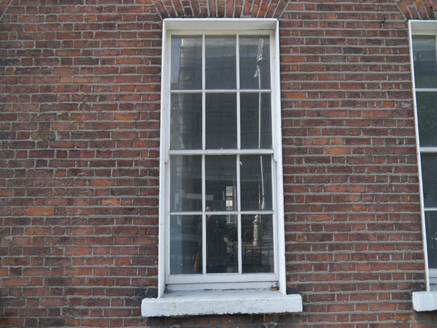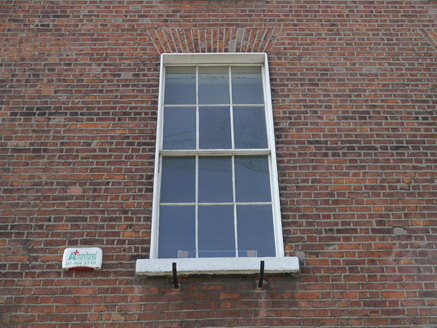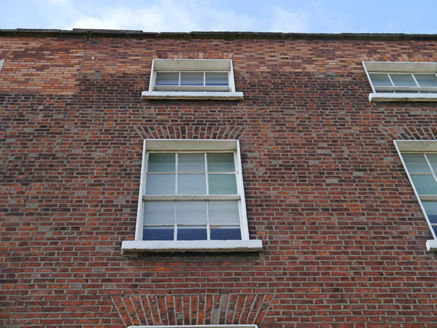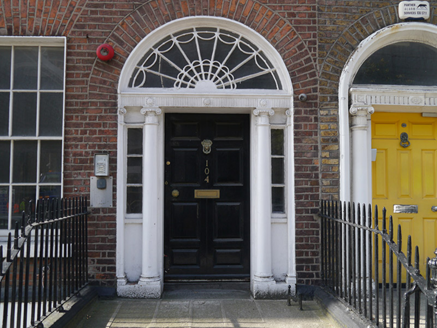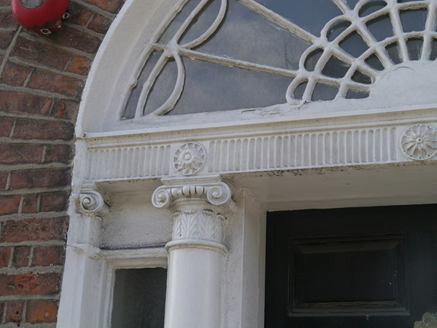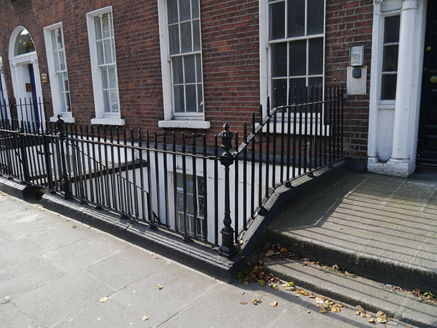Survey Data
Reg No
50930168
Rating
Regional
Categories of Special Interest
Architectural, Artistic
Original Use
House
In Use As
Office
Date
1815 - 1820
Coordinates
316754, 233145
Date Recorded
15/09/2015
Date Updated
--/--/--
Description
Terraced three-bay four-storey former townhouse over basement, built 1818, with two-bays to upper floors of principal (north) elevation. Two-storey return abuts to west-side of rear (south). Now in use as offices and flats. M-profile roof, hipped to west-end, brick chimneystacks to east party wall with clay pots, concealed behind rebuilt brick parapet with granite coping, concealed gutters with uPVC hoppers and downpipes to rear. Red brick walling laid in Flemish bond, rendered walling to basement with granite stringcourse. Square-headed window openings with projecting granite sills, patent reveals and brick voussoirs, openings diminishing to upper floors. Plain rendered surrounds to basement and rendered reveals to rear openings. Round-headed opening between first and second floor rear. Largely six-over-six timber sliding sash windows generally with horns; three-over-three to third floor. Single uPVC insert to rear; uPVC and recent timber casements across rear return. Round-headed door opening to western bay of principal elevation with Neo-classical doorcase comprising engaged Ionic columns supporting fluted frieze with rosettes and moulded cornice, flanked by tripartite sidelights and Ionic pilasters, decorative cobwebbed fanlight over eight-panelled timber door with beaded muntin and brass furniture. Paved granite entrance platform, with cast-iron boot scraper, accessed from street by two granite steps, flanked by cast-iron railings with decorative corner posts, on granite plinth, enclosing basement well to east. Steps with cast-iron handrail to basement, square-headed door opening located beneath entrance platform, plainly detailed with timber-sheeted door and single-pane sidelight with iron grille fixed to inner reveal. Street fronted onto the south side of Baggot Street Lower, abutted by similar terraces to east and west. Rear return abutted to south by expansive flat and pitched roofed recent commercial/industrial extensions fronting onto Hagan’s Court.
Appraisal
Built as a cohesive terrace comprising Nos. 99-104 (50930168-73), the buildings are fine examples of late-Georgian townhouses, characterised by slightly grander doorcases than those of neighbouring groups. Despite some replacement fabric insertions, the materials, massing and restrained detailing contribute to the strong architectural continuity which remains on the south-side of Baggot Street Lower. Notably, with two-bays on the upper floors and three-bays on the ground floor, this group diverges from the pattern of openings which dominate much of the street, thus diversifying its homogeneity. Although the streetscape of the southern-side is characterised by similar terraced groups, the subtle discrepancies between levels, detailing and materials is indicative of the speculative nature of development. Baggot Street, as it became known in 1773, is an ancient route from the city which was named after the manor granted to Robert Bagod in the thirteenth-century, called Baggotrath. Developed on Fitzwilliam’s land during the late-eighteenth century, construction of the street progressed slowly due to the economic recession of the 1790s; the area to the west of Fitzwilliam Street was built by the late 1790s but development to the east was more gradual with gaps remaining until the mid-nineteenth century.
